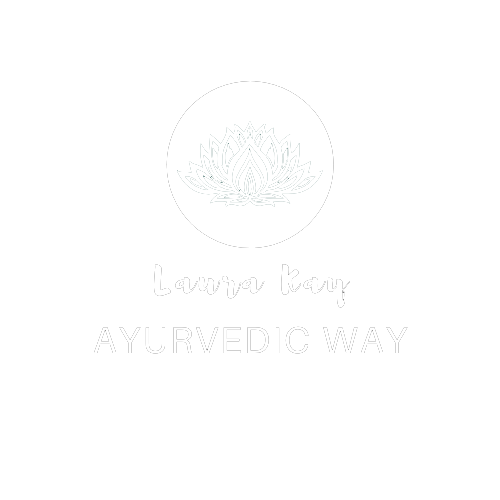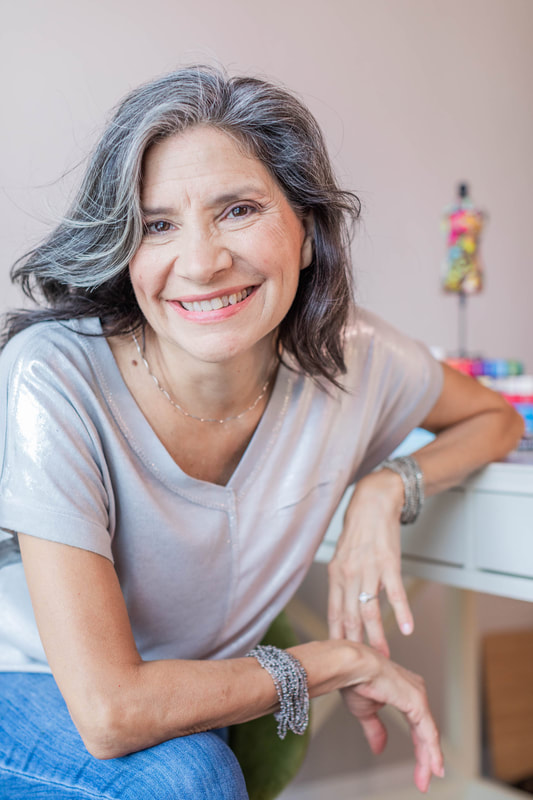About Ayurvedic Technician Laura Kay.
|
My Name is Laura Kay I am a daughter of the natural world, a Ayurvedic Technician and lover and educator of Digestive Wellness. I have completed my internship with the Maharishi Ayurveda from the Raji in Fairfield Iowa and have been a Certified Ayurvedic Panchakarma (Detoxification) Technician for the last 15 years. My education and life experiences has equipped myself with extensive, cutting edge knowledge in holistic wellness, coaching and prevention. Drawing a lot on my own expertise, I work with clients like you to help make lifestyle changes and choose healthy promoting ways that produce lasting results. I have devoted 40 plus years to a career in natural and organic salon and spa services. You can learn more about these services, L- DEE bUTTON TO OTHER SITE , it is my goal to help you make empowered wellness choices. Are you ready for a new chapter ? I am here to support your journey. Please Communicate With Your Technician To get the most out of your wellness treatment. Your comfort and enjoyment are important to us, so let us know if you have concerns about the depth of pressure, the temperature of your room, temperature of your wrap, music volume, or other issues. LEARN MORE ABOUT OUR OTHER SERVICES at holisticsalonspa.com |
I began my journey 40 years ago with Horst Rechelbacher ( founder of Aveda ) using natural products. I am continuously inspired to deepen my own self-exploration and spiritual growth while guiding clients in a similar journey. A healer-at-heart and compassionate about my work, my most joyful and powerful teachings is in Motherhood. I have raised my children to be optimally healthy and awake in raising there own children to love, care for and to be nourished by their connection to Mother Nature and healthy foods. I am grateful for the opportunity to help others obtain peace of mind and joy of the heart durning there journey towards a healthy lifestyle.
My Healing Organically Journey
My healing organically experienced started over 35 years ago, and continues to this day. From having fibromyalgia, ulcer digestive issues and finding a naturopathic doctor, this was the beginning of my journey. I literally learned how to eat well, deal with emotional issues, and other struggles that came my way. It wasn't easy, I become aware of how my body functions, how I was dealing with emotions and realizing that it is a daily process. Healing is a journey, not a destination. After experiencing this transformation through Ayurveda, I believed and understood both its power and wisdom. As we all move forward into this fast pace world, there is something to be learned from wise traditions. Ayurveda can be a doorway into a higher consciousness and aligned living, and as I continue to evolve and learn I will forever be both the student and the teacher / guide.
What ever the healing journey is for you, as a Technician / Coach I can help you by putting the power back in your hands to really focus on YOU and your goals and help you heal yourself from the inside out. Consultations are advised so I can assess your situation and create a plan for your unique situation. I am dedicated to spreading knowledge of Ayurveda, helping as many people that are welcoming balance to their mind, body and soul. Welcoming all Ayurvedic knowledge from Ayurvedic Doctors / Practitioners and coaches and Wellness providers. I love working along side great knowledge that will create a even greater balance and harmony with other practitioners this is my super power. Healing is a continuous journey and Ayurveda provides a path for all.
My Healing Organically Journey
My healing organically experienced started over 35 years ago, and continues to this day. From having fibromyalgia, ulcer digestive issues and finding a naturopathic doctor, this was the beginning of my journey. I literally learned how to eat well, deal with emotional issues, and other struggles that came my way. It wasn't easy, I become aware of how my body functions, how I was dealing with emotions and realizing that it is a daily process. Healing is a journey, not a destination. After experiencing this transformation through Ayurveda, I believed and understood both its power and wisdom. As we all move forward into this fast pace world, there is something to be learned from wise traditions. Ayurveda can be a doorway into a higher consciousness and aligned living, and as I continue to evolve and learn I will forever be both the student and the teacher / guide.
What ever the healing journey is for you, as a Technician / Coach I can help you by putting the power back in your hands to really focus on YOU and your goals and help you heal yourself from the inside out. Consultations are advised so I can assess your situation and create a plan for your unique situation. I am dedicated to spreading knowledge of Ayurveda, helping as many people that are welcoming balance to their mind, body and soul. Welcoming all Ayurvedic knowledge from Ayurvedic Doctors / Practitioners and coaches and Wellness providers. I love working along side great knowledge that will create a even greater balance and harmony with other practitioners this is my super power. Healing is a continuous journey and Ayurveda provides a path for all.
The caveman diet, keto, Eating raw foods and juicing, trending new diet popping up every time you turn around? If so, which one to choose and whether you can still follow your Ayurvedic path.
The value of Ayurvedic is that it gives you kind of a filter. It’s a long tradition. It’s not just a fad, and it gives you an idea of how your individual, mind-body type will respond to a new path the Ayurvedic way.
Here’s is some talk about Paleo, keto, vegan, and raw diets along with some Ayurvedic insights on how each diet relates to the dosha body types
1. THE PALEO DIET, as the name suggests, the Paleo diet is inspired by the foods our caveman ancestors ate in the Paleolithic era. They say going Paleo will help you lose weight and strengthen immunity. This hunter-gatherer diet generally involves eating meat, seafood, eggs, veggies, nuts, fruit in moderation, and healthy fats like olive oil. Foods to be avoided include grains, legumes, dairy, potatoes, salt, processed foods, and vegetable and seed oil.
So can you go Paleo and still eat Ayurvedically?
The Ayurveda Take
"It can be done” The Ayurvedic diet involves eating mung dahl, whole grains, milk, ghee butter, and very little meat and eggs; kind of the opposite of Paleo. So it can be done.
That being said, some dosha types do better on a Paleo diet than others.
"A Pitta dosha type would do much better on a Paleo diet, because a Pitta’s strong digestion could probably handle the meat better. Vata types have more delicate digestion, so they would need to be more conscious so they will not have a hard time."
Paleo can be helpful for some people for a period of time, because avoiding grains, dairy, and sugar helps weed out common food allergens and sensitivities.
"Ayurveda is all about easy digestion and favors well-cooked, easy-to-digest meals. Ayurveda still favors cooked meals.
2. THE KETOGENIC DIET, keto diet, is a low-carb, high-fat diet that shares some strong similarities with the Paleo diet, the Atkins diet, and other low-carb regimens. By minimizing your carbohydrate intake and upping your fat intake, proponents say, your body enters a metabolic state called ketosis and becomes a fat-burning machine. People who eat keto favor low-carb foods like meat, fish, eggs, veggies, and natural fats like olive oil and butter. They also avoid foods full of sugar and starch, like bread, pasta, sweets, pastries, rice, soda, juice, and potatoes.
The Ayurveda Take
"Vata types will do well with all the natural fats in the ketogenic diet. "Pitta types would be okay, too. But it would be really rough on a Kapha type. Kaphas have the slowest metabolism, and their constitutions are just not designed to have a lot of fats. Given that the keto diet involves 70-80 percent saturated fats, not great for a Kapha person."
When we customized blend of keto and Ayurvedic dietary principles for clients looking to prevent and reverse cognitive decline.
"The keto diet does involve fasting, which may not be ideal for all body types. When you’re ketogenic, you have an early, light dinner, and then you essentially fast for 12-14 hours. "As a result, your body goes into ketosis—a metabolic process where you start to use the body’s fats as a way of surviving, and then your glucose reserves run out. This type of fasting might not be ideal for Pittas, who already have a high metabolism."
"On the other hand, the fasting aspect will be hard on Vata body types, as Vata needs heavy, regular food to ground its body. "Do you ever notice you get cold when you haven’t eaten? This is a Vata response to lack of food. Do you get low blood sugar when you haven’t eaten? This is a Pitta response to lack of food. So, following your Ayurvedic constitution can offer signals to what is appropriate for you."
3. THE VEGAN DIET The vegan approach to eating is now fairly mainstream. Vegans eat wholesome, plant-based foods like whole grains, legumes, fruits, veggies, nuts, and seeds, while avoiding animal products like meat, seafood, dairy, and eggs. People may come to veganism for ethical or environmental reasons, or in an attempt to improve their health. Veganism is often the next step for vegetarians who may be lactose intolerant.
The Ayurveda Take
There are many parallels between Ayurvedic eating and the vegan diet, but the biggest difference is that Ayurveda recommends certain types of dairy, whereas vegans avoid it altogether. In Ayurveda, dairy is considered sattvic (life-giving to body, mind, and spirit); foods like ghee, warm milk, fresh paneer (cheese curds), and lassi (a yogurt beverage) are part of the daily diet.
"Vegans also tend to go for more of a raw diet, which wouldn’t be good for Vata types, because they don’t do so well with cold or raw foods. But a Pitta person could do it, and a Kapha body type would do well.
For dosha types who can tolerate it, the vegan diet may be helpful for intestinal health. "You’re eating a lot of vegetables, and vegetables have fibers, which are like a prebiotic; they feed the gut bacteria. It seems like people who have a high fiber diet have a much greater diversity of gut bacteria, and experts believe that could be better.
4 THE RAW FOOD DIET Raw food diet involves eating lots of quantities of raw foods! Cooking foods destroys their natural enzymes, proponents say, so raw foodies juice, puree, soak, and sprout their meals, or cook them below 116-118 degrees Fahrenheit. On the menu: raw fruits, veggies, legumes, grains, nuts and seeds, olive oil, and raw coconut oil or butter. To be avoided: anything cooked or processed. And some raw advocates even consume raw fish and meat.
The Ayurveda Take
"Generally, cooked food is easier to digest. Raw vegetables would be a little tough on a Vata person. But if you are a Pitta or Kapha person with a healthy gut, raw food is fine. Your body type can very easily handle it.
Sprouts are common in both raw food and vegan diets, Ayurveda Vata types should eat theirs with a little oil to help counter Vata dosha’s cool, drying influence.
Some raw foodies do eat raw fish and meat, not recommend unless digesting can handle it.
"Okasatmya Ayurvedic concept of okasatmya. It means, if your grandparents gave you raw fish—like if you grew up in Japan—it’s part of your tradition, and it’s soothing to you." Then go ahead.
AYURVEDA for the MODERN WORLD It is a brave new world here in the West for Ayurveda, as we Ayurvedic practitioners trying to keep up with the pace of dietary trends and new comings.
We are all trying to be adaptable. This is why we’re now seeing recommendations like different types of meat or fresh juice for different dosha types, though this is not the norm in a traditional setting, but times have changed for the better. Keeping the new and the old is what gives us balance in every day life.
Not sure what’s right for you? I recommends starting off with a Rest and Repair diet and eliminating your intake of wheat, sugar, and dairy for a few weeks to heal your gut. Then, take Ayurveda's Dosha Quiz to learn your Ayurvedic makeup and dietary recommendations.
"Ayurveda is a fabulous resource because you have a thousand-year-old tradition that offers individualized recommendations. I think that’s where many of these diets are lacking; they don’t take into account our individual makeup. We’re all very, very different, and there’s no real one-diet-fits-all approach. Ayurvedic is a really great way of filtering everything."
"Ayurvedic is truly a personalized healthcare, as it recognizes the unique qualities of each person and applies this understanding in a practical, quantifiable manner. This is the beauty of the Ayurvedic way: it recognizes differences and is self-referral, allowing for subtle changes in our day-to-day lives, suited best for each individual person.
The value of Ayurvedic is that it gives you kind of a filter. It’s a long tradition. It’s not just a fad, and it gives you an idea of how your individual, mind-body type will respond to a new path the Ayurvedic way.
Here’s is some talk about Paleo, keto, vegan, and raw diets along with some Ayurvedic insights on how each diet relates to the dosha body types
1. THE PALEO DIET, as the name suggests, the Paleo diet is inspired by the foods our caveman ancestors ate in the Paleolithic era. They say going Paleo will help you lose weight and strengthen immunity. This hunter-gatherer diet generally involves eating meat, seafood, eggs, veggies, nuts, fruit in moderation, and healthy fats like olive oil. Foods to be avoided include grains, legumes, dairy, potatoes, salt, processed foods, and vegetable and seed oil.
So can you go Paleo and still eat Ayurvedically?
The Ayurveda Take
"It can be done” The Ayurvedic diet involves eating mung dahl, whole grains, milk, ghee butter, and very little meat and eggs; kind of the opposite of Paleo. So it can be done.
That being said, some dosha types do better on a Paleo diet than others.
"A Pitta dosha type would do much better on a Paleo diet, because a Pitta’s strong digestion could probably handle the meat better. Vata types have more delicate digestion, so they would need to be more conscious so they will not have a hard time."
Paleo can be helpful for some people for a period of time, because avoiding grains, dairy, and sugar helps weed out common food allergens and sensitivities.
"Ayurveda is all about easy digestion and favors well-cooked, easy-to-digest meals. Ayurveda still favors cooked meals.
2. THE KETOGENIC DIET, keto diet, is a low-carb, high-fat diet that shares some strong similarities with the Paleo diet, the Atkins diet, and other low-carb regimens. By minimizing your carbohydrate intake and upping your fat intake, proponents say, your body enters a metabolic state called ketosis and becomes a fat-burning machine. People who eat keto favor low-carb foods like meat, fish, eggs, veggies, and natural fats like olive oil and butter. They also avoid foods full of sugar and starch, like bread, pasta, sweets, pastries, rice, soda, juice, and potatoes.
The Ayurveda Take
"Vata types will do well with all the natural fats in the ketogenic diet. "Pitta types would be okay, too. But it would be really rough on a Kapha type. Kaphas have the slowest metabolism, and their constitutions are just not designed to have a lot of fats. Given that the keto diet involves 70-80 percent saturated fats, not great for a Kapha person."
When we customized blend of keto and Ayurvedic dietary principles for clients looking to prevent and reverse cognitive decline.
"The keto diet does involve fasting, which may not be ideal for all body types. When you’re ketogenic, you have an early, light dinner, and then you essentially fast for 12-14 hours. "As a result, your body goes into ketosis—a metabolic process where you start to use the body’s fats as a way of surviving, and then your glucose reserves run out. This type of fasting might not be ideal for Pittas, who already have a high metabolism."
"On the other hand, the fasting aspect will be hard on Vata body types, as Vata needs heavy, regular food to ground its body. "Do you ever notice you get cold when you haven’t eaten? This is a Vata response to lack of food. Do you get low blood sugar when you haven’t eaten? This is a Pitta response to lack of food. So, following your Ayurvedic constitution can offer signals to what is appropriate for you."
3. THE VEGAN DIET The vegan approach to eating is now fairly mainstream. Vegans eat wholesome, plant-based foods like whole grains, legumes, fruits, veggies, nuts, and seeds, while avoiding animal products like meat, seafood, dairy, and eggs. People may come to veganism for ethical or environmental reasons, or in an attempt to improve their health. Veganism is often the next step for vegetarians who may be lactose intolerant.
The Ayurveda Take
There are many parallels between Ayurvedic eating and the vegan diet, but the biggest difference is that Ayurveda recommends certain types of dairy, whereas vegans avoid it altogether. In Ayurveda, dairy is considered sattvic (life-giving to body, mind, and spirit); foods like ghee, warm milk, fresh paneer (cheese curds), and lassi (a yogurt beverage) are part of the daily diet.
"Vegans also tend to go for more of a raw diet, which wouldn’t be good for Vata types, because they don’t do so well with cold or raw foods. But a Pitta person could do it, and a Kapha body type would do well.
For dosha types who can tolerate it, the vegan diet may be helpful for intestinal health. "You’re eating a lot of vegetables, and vegetables have fibers, which are like a prebiotic; they feed the gut bacteria. It seems like people who have a high fiber diet have a much greater diversity of gut bacteria, and experts believe that could be better.
4 THE RAW FOOD DIET Raw food diet involves eating lots of quantities of raw foods! Cooking foods destroys their natural enzymes, proponents say, so raw foodies juice, puree, soak, and sprout their meals, or cook them below 116-118 degrees Fahrenheit. On the menu: raw fruits, veggies, legumes, grains, nuts and seeds, olive oil, and raw coconut oil or butter. To be avoided: anything cooked or processed. And some raw advocates even consume raw fish and meat.
The Ayurveda Take
"Generally, cooked food is easier to digest. Raw vegetables would be a little tough on a Vata person. But if you are a Pitta or Kapha person with a healthy gut, raw food is fine. Your body type can very easily handle it.
Sprouts are common in both raw food and vegan diets, Ayurveda Vata types should eat theirs with a little oil to help counter Vata dosha’s cool, drying influence.
Some raw foodies do eat raw fish and meat, not recommend unless digesting can handle it.
"Okasatmya Ayurvedic concept of okasatmya. It means, if your grandparents gave you raw fish—like if you grew up in Japan—it’s part of your tradition, and it’s soothing to you." Then go ahead.
AYURVEDA for the MODERN WORLD It is a brave new world here in the West for Ayurveda, as we Ayurvedic practitioners trying to keep up with the pace of dietary trends and new comings.
We are all trying to be adaptable. This is why we’re now seeing recommendations like different types of meat or fresh juice for different dosha types, though this is not the norm in a traditional setting, but times have changed for the better. Keeping the new and the old is what gives us balance in every day life.
Not sure what’s right for you? I recommends starting off with a Rest and Repair diet and eliminating your intake of wheat, sugar, and dairy for a few weeks to heal your gut. Then, take Ayurveda's Dosha Quiz to learn your Ayurvedic makeup and dietary recommendations.
"Ayurveda is a fabulous resource because you have a thousand-year-old tradition that offers individualized recommendations. I think that’s where many of these diets are lacking; they don’t take into account our individual makeup. We’re all very, very different, and there’s no real one-diet-fits-all approach. Ayurvedic is a really great way of filtering everything."
"Ayurvedic is truly a personalized healthcare, as it recognizes the unique qualities of each person and applies this understanding in a practical, quantifiable manner. This is the beauty of the Ayurvedic way: it recognizes differences and is self-referral, allowing for subtle changes in our day-to-day lives, suited best for each individual person.

L-DEE. THIS CAN HAVE A LINK TO BODY NURTURING WEB PAGE — I also have incorporate my passion for holistic health and therapy into my work with personal and home styling, taking a unique, holistic-approach to style. I like to call myself a visual guru, having an eye in how color affects us mentally, emotionally, psychologically, spiritually, and even physically. I use these principles of color in my personal style coaching. My approach to style and beauty is closely aligned with the ancient traditions of India of seeking balance in order to look and feel radiant.
AYURVEDIC WAY TO HEALING
the Inner and outer style
|
|
LauraArechigo@gmail.com
Pismo Beach Office Park 330 James Way Suite 120-130 Pismo Beach California 93449 Opening - October 2023 Central Coast California |
phone or text
|




